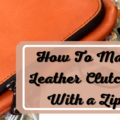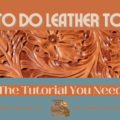Leather bookbinding has always been a thing for many leatherworkers, bookbinders, and conservators. Many books used in history were covered in different types of leather, showing how people valued leather as a cover for their precious books throughout the ages. Thus, it is important to know which kinds of leather are perfect for bookbinding and keeping your book presentable, beautiful, and expensive-looking.
Calfskin and goatskin are the most popular choices for leather used in bookbinding. Both of them are soft and supple yet durable and resilient enough to handle constant wear and tear. Others include vellum, sheepskin, lambskin, and pig or hog skin.
This article discusses the different types of leather you can use for your bookbinding projects. You will learn about these different types of leather in detail and why leatherworkers choose them, among many others. From conventional types to lesser-known ones, let this article nourish your mind with the information you need about leather types used in bookbinding.
- Leather Used For Bookbinding
- Types Of Leather Used For Bookbinding
- Calfskin: The Most Popular Choice
- Goatskin: The Second Best Choice
- Sheepskin: The Darling of the Bookbinders in the 1800s
- Vellum: Leather But Not Really Full Leather
- Lambskin: Sheepskin’s More Expensive Cousin
- Bison or Buffalo Skin: Tougher Option For Bookbinding
- Hog or Pig Skin: An Unconventional Yet Functional Choice
- Leather in Bookbinding Adds Sophistication
Leather Used For Bookbinding
It is important to note that while you can use any kind of leather for your bookbinding projects, leatherworkers most often use calfskin or goatskin for their bookbinding needs. Some people use vellum, and others even use sheepskin, lambskin, or even pig skin. Out of all these options, most leatherworkers use goatskin or calfskin for their pliant qualities.
Types Of Leather Used For Bookbinding
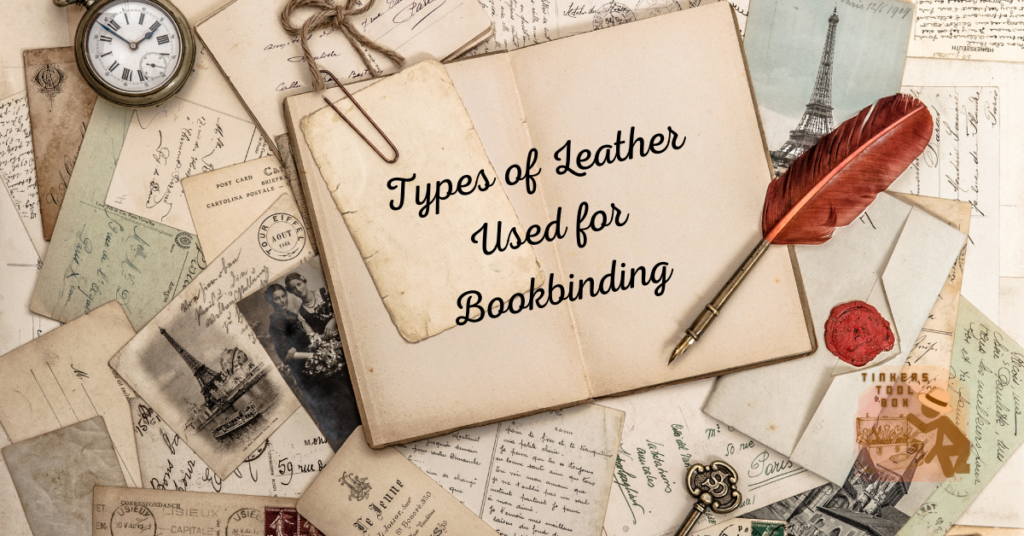
Before choosing which type of leather is the best for your bookbinding project, let us first discuss the different options you have for your bookbinding projects. This section will help you understand everything you must know about the leather used for bookbinding.
Calfskin: The Most Popular Choice
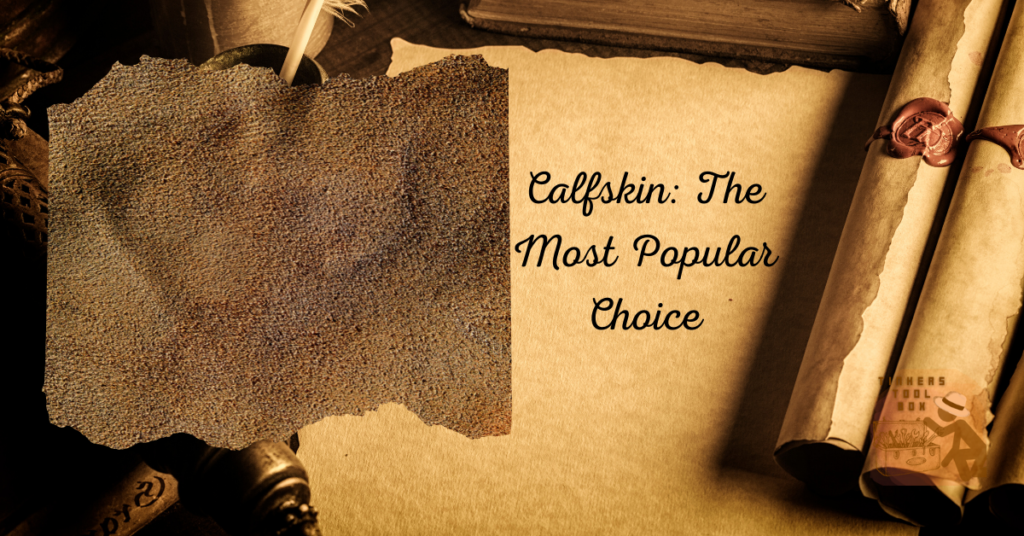
Calfskin is one of the most popular choices for the leather used in bookbinding projects, along with goatskin. Calfskin is often chosen due to its pliant quality, which allows the leatherworker to easily work around it.
Calfskin also has a surface that feels smooth to the touch. Thus, it looks more luxurious and expensive than other leather types, but it is also very durable. It is even known to be more durable than cowhide, one of the most common types of leather known to man.
Since it has these outstanding qualities, it makes sense that most people prefer using calfskin as their leather of choice for many leatherworking projects, not even on bookbinding projects. It is also the prime choice for jackets, wallets, bags, belts, and other leather accessories and clothing items.
Some even say that calfskin is the most luxurious looking natural leather, but that is subject to personal taste, I am afraid. What everyone can agree on here is that calfskin is of great quality for many leatherworking projects.
Calfskin is a type of leather obtained from the hide of young cattle that were domesticated. Aside from the crocodile skin, snakeskin, and other luxurious types of leather, calfskin is highly favored by many people due to its exquisite quality. Many fashion designers use them for luxury items, such as bags, wallets, and other accessories.
In terms of bookbinding, calfskin is favored by leather workers because it is easy to work with, even though it might look fragile. It is surprisingly durable, even more durable than common cowhide, although they came from the same animal. It is also thin enough to be used easily in bookbinding but sturdy and durable.
Even though it is expensive, calfskin is always used in bookbinding projects. It is smooth and has a light brown color. It is often textured, and many bookbinders often dye it to achieve their desired output.
Also, calfskin tends to be much larger than goatskin, and it has a much smoother and more delicate surface. Calfskin is also abrasion-resistant, which makes it last much longer, and it also takes on high luster with use.
Calfskin is the type of leather used in most Bibles ever since bookbinding started. It is still the leather of choice for Christianity’s holiest book until now. The New King James Version of the Holy Bible is known to be printed, and it is always adorned in premium calfskin leather.
Goatskin: The Second Best Choice
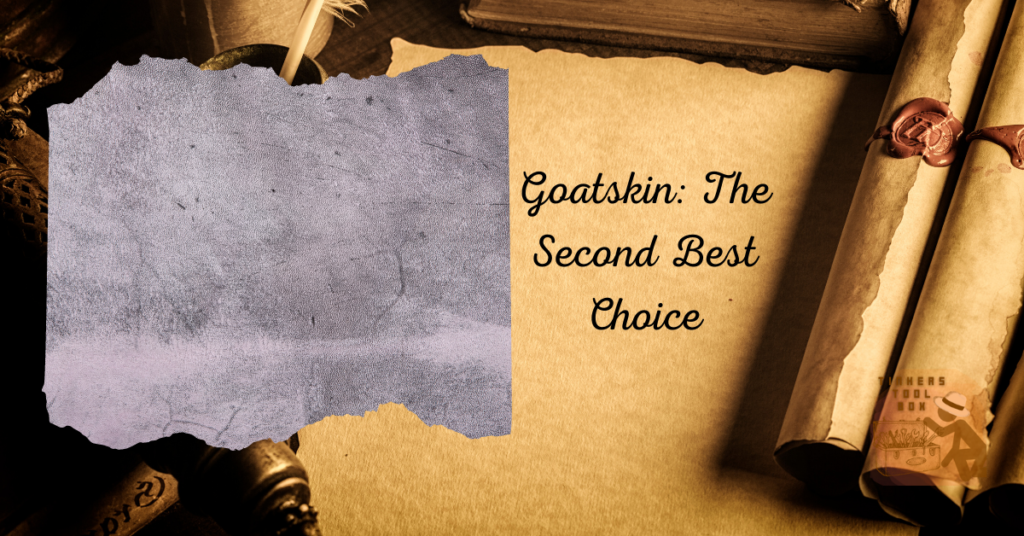
Another known type of leather used in bookbinding projects is goatskin. This is usually obtained from the hide of a kid or a young goat. It is always sought after by many bookbinders and conservators, especially the genuine ones.
Most of the goatskins sold in the market today are vegetable-tanned and aniline dyed, which are great components for bookbinding purposes.
Compared to calf skins, goatskins tend to have a more resilient surface and a more pronounced texture. The textures vary depending on the tanning techniques used by the tannery where these skins came from.
While calfskin is the most expensive choice commonly used for bookbinding projects, goatskin offers the same qualities, with the price the only difference.
Simply put, goatskin is much more affordable than calfskin, and it is also softer and tougher than cow leather. Known to be supple, flexible, lightweight, and comfortable to use, it is also water-resistant. This is one of the reasons why bookbinders love using it on their bookbinding projects.
Goatskin is also known as Morocco leather, hailing from where it originated during the Middle Ages. It is favored by the bookbinders because of its outstanding beauty and very resilient top-quality. The bookbinders do not need to shell out lots of money with goatskin because they offer the same qualities as calfskin for a lower price point.
Goatskin is strong yet soft and supple, which is used in the finest of bookbindings. According to Cambridge University Press, the best goatskins used for bookbinding are sourced from northern Nigeria, in an area where the present environmental conditions provide a perfect environment for producing goatskin hides with the right amount of suppleness and strength.
The tanning methods used in these goatskin hides are the same ones used by those who started this trade thousand of years ago. The Cambridge University Press uses Nigerian goatskins that were finished in the United Kingdom for their binding projects.
Historically, goatskin was used in leather bookbinding in the 12th and 13th centuries. Goatskin hides used back then were colored purple, blue, green, and bright red. In England, for example, goatskin was still used until the 18th and 19th centuries, with the different colors providing another dose of decoration to the leather-bound books.
Today, goatskin is still used by many bookbinders, especially those who are on a budget. Still, they do not want to compromise the quality of their leather bookbinding projects.
Sheepskin: The Darling of the Bookbinders in the 1800s

Sheepskin was also a popular choice among bookbinders, especially during the 17th and 18th centuries, along with calfskin and goatskin.
Sheepskin is known to be very soft, pliable, and comfortable. This is the exact reason why bookbinders favor them, especially those who are into more affordable materials for leather bookbinding. Leather must be pliable for bookbinders to work on in their bookbinding projects.
Sheep leather, obtained from the hide of a baby sheep, is warm, lightweight, and delicate. It also absorbs water well, which can be a downside for most people who want to protect their books with sheepskin.
Tan colored sheepskin was used in several books published in the 17th and 18th centuries. By the 19th century, it was used in embossing through a wide variety of ways to provide more appealing surfaces or simulate other kinds of leather.
Unfortunately, it is not the best choice for bookbinding projects because it is not a strong type of leather, unlike goatskin and calfskin. They are affordable, but they are also prone to peel away due to excessive wear and tear.
For example, if the book covered in sheepskin is always pulled back in and out of the shelves in the library, it can wear down the cover in time.
Books that were not really that expensive used sheepskin to boost their pricing a bit, and the grain split of sheepskin is known to be very thin. Thus, sheepskin is also often used for spine labels on books or the part where the book title is written when displayed on shelves.
Some of the known books that used sheepskin on the covers include the book owned by Harvard Law School, which was first thought to be bound in human skin. This Spanish law book was published in 1605-1606, with the glue used to be made of cattle and pig collagen.
Vellum: Leather But Not Really Full Leather

Vellum is from animal skin, same with the other types of leather from this list, but this does not really classify as a full-fledged leather type because it does not undergo the usual processes that animal leather usually has, such as tanning.
Vellum comes into existence when the animal skin is soaked in lime juice to remove both hair and flesh much easier through scraping. After that, it gets treated to get rid of the grease and shaved by a knife to reach its uniform thickness.
Vellum is indeed durable, but you cannot expect your book to be protected by it, especially if the book gets exposed to the environmental conditions that may be present in libraries and other houses, such as sunlight, moisture, water, and many others. Vellum was popularly used in the 16th and 17th centuries for bookbinding. Still, it has gone out of favor from bookbinders in the current era.
Recently, if a book is bound with vellum, it is either from a private press or a limited edition copy.
Lambskin: Sheepskin’s More Expensive Cousin
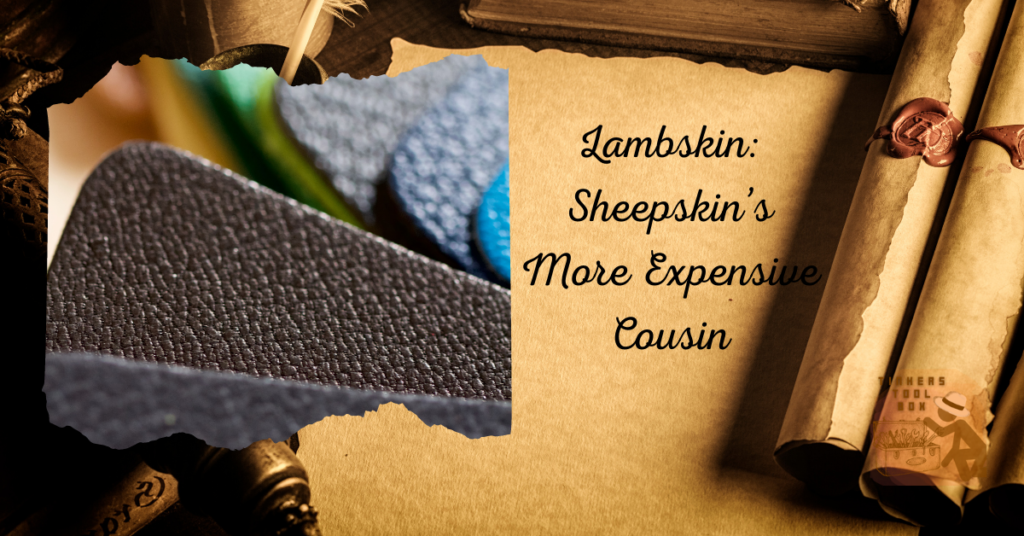
Lambskin is made only from the hide of young sheep, and same as sheepskin, they are also known to be soft and delicate compared to other types of leather. Leatherworkers use lambskin primarily for clothing, such as jackets, skirts, pants, and other articles of clothing. Still, there are also books bound by lambskin that were present in the 17th and 18th centuries.
Lambskin is also known to be thin and supple with a texture compared to a smooth butter. Tanning lambskin can be a delicate process, given the material, and thus makes it more expensive than other types of leather.
Lambskin is not as durable as other more common types of leather, such as cowhide. However, it still does a relatively good job of keeping off heat and dirt buildup. One thing that it is prone to, however, is constant wear and tear. Thus, the constant pulling and pushing back to the shelves can damage it in the long run. Also, they tend to be easily stained because of their delicacy.
Recently, you can find Bibles and other religious books covered in lambskin. They are often expensive due to the delicate material used for covering. Most people who buy these Bibles often use them for display and decoration purposes rather than actually using them as intended.
Bison or Buffalo Skin: Tougher Option For Bookbinding
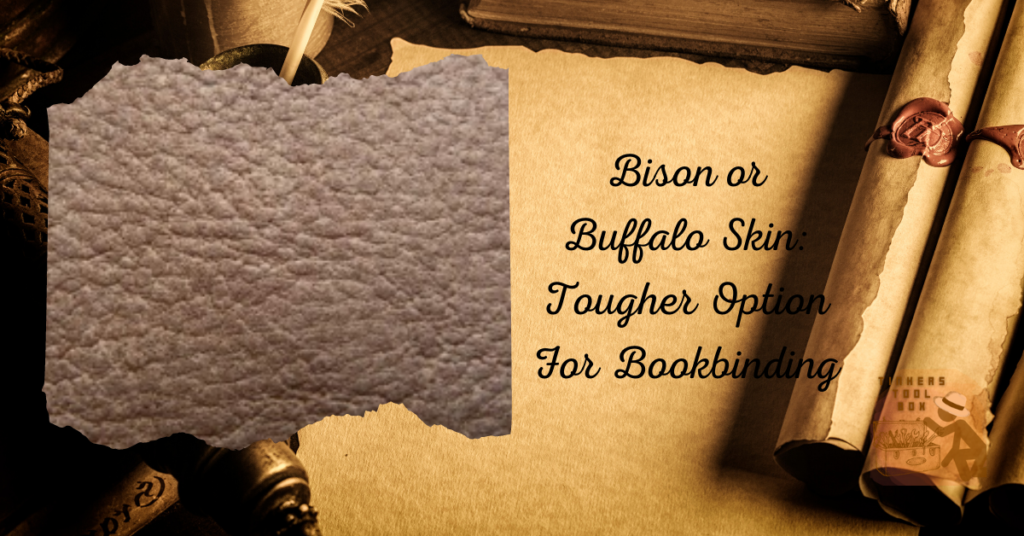
Buffalo skin or bison skin is a durable and heavy-duty type of leather. The exterior might feel rugged and sturdy, but it is also soft and supple with a rubber wax feel. It is also very value priced.
It has a more pebbly appearance, thanks to the thicker fibers that are more widely spaced. The hair follicles, which are also evident throughout the hide, also contribute to the pebbly appearance.
Aside from bookkeeping, it can also be used in creating belts, shoes, leather furniture, gloves, rugs, baseball gloves, and jackets. It can last much longer yet still provide that sophisticated character leather has in general. It is usually sewn by hand through saddle-stitching, which is much easier than sewing it through a sewing machine.
Hog or Pig Skin: An Unconventional Yet Functional Choice
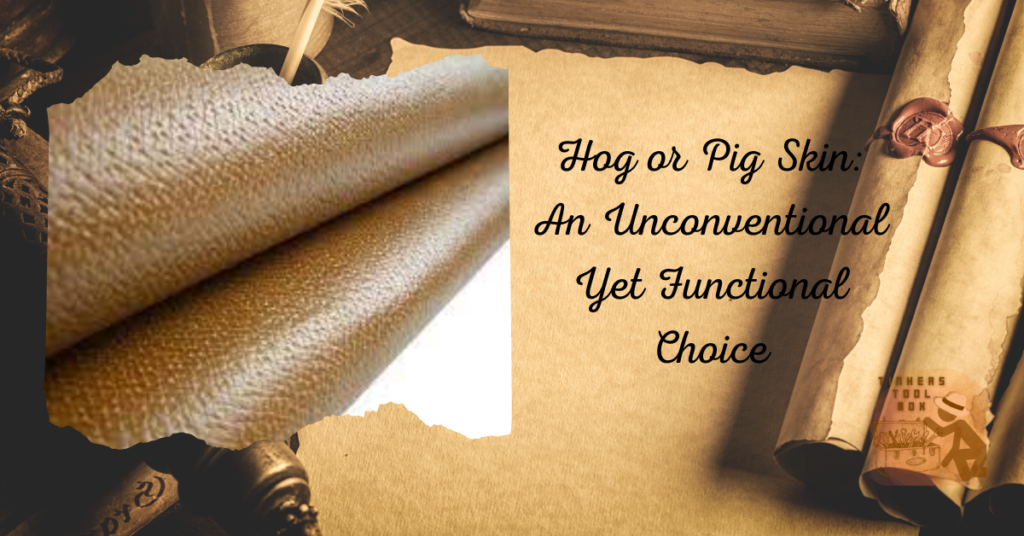
Lastly, many people might not think this is the right option, but some people use hog or pig skin for their bookbinding projects. Pigskin has very good durability and a soft and supple feel. Unless you tell the person otherwise, they would not think it came from a pig or a hog.
It is also very pliable and dense, which makes it a great material for bookbinding projects. However, its primary use is for manufacturing handbags. The texture from pig or hog skin can be easily treated in many ways possible, such as embossing, stamping, or perforating.
Leather in Bookbinding Adds Sophistication
There is a reason why many people love buying leather-bound books even though there are copies of their favorite books in hardbound or paperback. Leather adds a touch of sophistication to the books, making them more expensive to touch and feel.
Also, regardless of the leather used, if a bookbinding project involves leather in it, it would still look presentable and polished, compared to other bookbinding projects using cloth or paper. Thus, it is perfectly understandable why good leather should be used in bookbinding projects.
Lastly, bookbinders should also note that whatever kind of leather they choose, it must weather the constant wear and tear from the users and other environmental factors. That way, the books would last much longer, and more generations would enjoy and experience how using leather-bound books are like.




